Relationship Skills
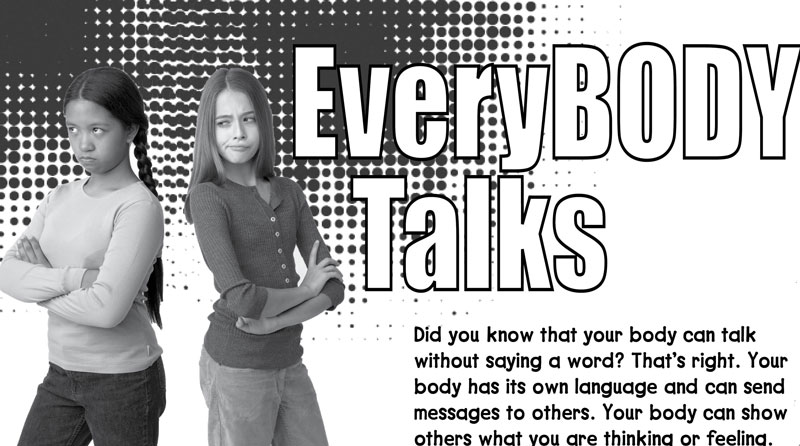
Find this activity in the student portfolio
Objective: Students will be able to use their body language to communicate clearly.
Estimated Duration: 20 minutes
Description: Body language is a way that people communicate with each other without using words. Your body language sends messages to others about how you are feeling or what you are thinking. Teaching students to be aware of their own body language as well as how to read others' can help them communicate more effectively.
This activity will help students think about their own body language. They will name emotions and the body language they use to communicate what they are feeling.
Teachable Moments: There are many ways you can help students understand the messages their body language sends:
- If students struggle with reading body language, try matching movements to messages. For example, smile and wave. Then ask students what you are feeling. Do the same with different emotions. Be sure to give verbal anchors to help them remember each visual clue (A smile and a wave usually means you are happy and feeling friendly or welcoming.).
- Play charades. Write different emotions on index cards and have students take turns acting them out.
- Watch short video clips that show several types of body language. Ask students to explain what the person is feeling and how they know (e.g., clenched fists, fidgeting in seat, arms crossed, etc.).
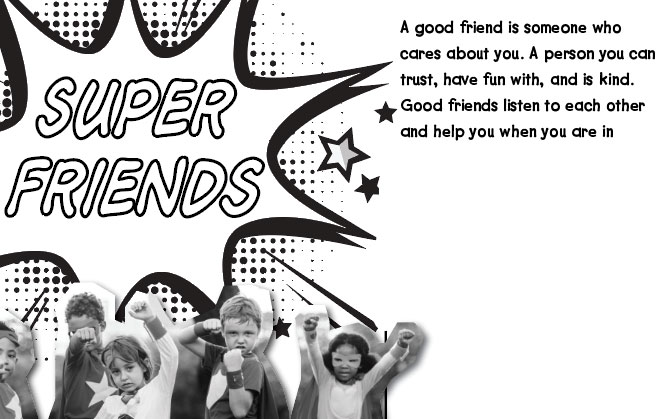
Find this activity in the student portfolio
Objective: Students will be able to understand what it means to be a good friend.
Estimated Duration: 20 minutes
Description: Friendships have an enormous impact on students' mental health and happiness.
Teaching children what it means to be a good friend will help them to develop positive relationships with their peers. Not only do students need to know the qualities of a good friend, but they also need to know that friendships take work. They must give to get.
This activity will help students recognize what qualities they look for in a friend as well as ask them to practice being a good friend to others.
Teachable Moments: There are many ways you can help students to develop positive relationships with their peers:
Help students feel confident and have a positive self-esteem. Highlight their best attributes regularly (e.g., honesty, compassion, thoughtfulness, etc.) to set them up to be a good friend to others.
- Model good friendship behavior with others at school.
- Teach students the golden rule.
- Talk about what a not-so-good friend is and does.
- Read books about friendship and talk about what the characters do to make them good friends.
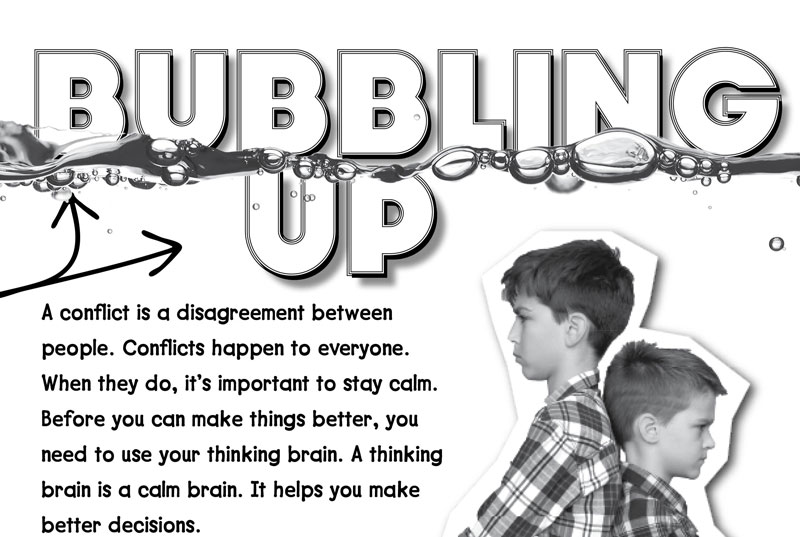
Find this activity in the student portfolio
Objective: Students will be able to identify ways to calm down to help resolve conflicts constructively.
Estimated Duration: 20 minutes
Description: Conflicts can cause stress, anger, feelings of resentment, and they can make it difficult to focus. Skills for conflict resolution are crucial throughout life. It’s important to teach students how to appropriately manage conflicts and the feelings that come along with them.
Conflicts can be difficult to navigate because they bring out intense emotions that students may not be able to process. Before they can address the problem that caused the conflict—whether it was a fight over a toy or betrayal by friend— students need to be able to calm down and get to a place emotionally where they can think before they act.
This activity will help students think of ways they can calm down when their emotions start to bubble up. They will draw or write strategies that they can use to calm down and help them think clearly, so they can resolve conflicts.
Teachable Moments: There are many ways you can help students to calm down when their emotions bubble up:
- Have students count to or down from 10.
- Have students take some deep breaths.
- Have students take a walk in a designated area.
- Have students go to a spot that you have designated as a “chill spot.”
- Have students listen to soothing music.
- Have students do yoga or stretching exercises.
- Have students draw or color quietly.
- Have students look at a book or read.
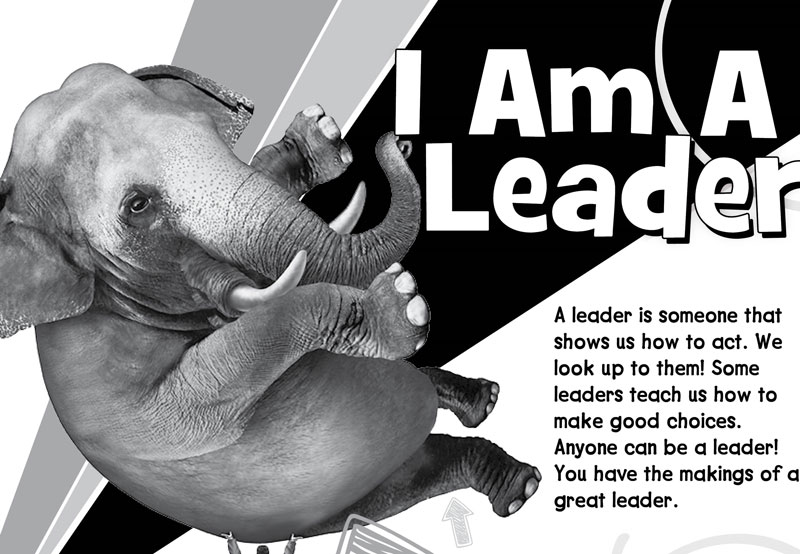
Find this activity in the student portfolio
Objective: Students will be able to recognize and communicate leadership skills in themselves and others.
Estimated Duration: 20 minutes
Description: It is important for students to learn and build on their leadership skills to open new possibilities and help make better decisions.
Leadership is a multi-faceted skill that helps students learn to communicate, empathize with others, solve problems, and work in teams. Good and effective leadership is a skill that can be learned, practiced, and improved on.
Most think of the loud and confident personalities as the obvious leaders. But even the quiet, shy kid in class can be a leader. In fact, it is likely that at some point in their life, everyone will be called upon to lead in some way or another. For this reason, it is crucial that we help students learn how to prepare for leadership roles.
This activity helps students think about what makes a good leader. They are asked to write about ways that they think leaders should act, things they should say, and things they should think.
Teachable Moments: To help students build their leadership skills:
- Be sure to involve students in leadership opportunities in the classroom. Some ideas include handing out papers or leading the line. It is best to make these opportunities become a part of the classroom routine every day.
- Demonstrate how you exhibit leadership skills. Explain what your leadership responsibilities are each day.
- Share good examples of leadership in your community and in the world around you. Discuss the leadership your principal must show. Look for other examples of leadership in coaches, parents, athletes, movies, etc.
- Provide opportunities for group projects where students can rise to the occasion and lead within a group setting.
Foldable®: When Moments®
Estimated Duration: 25-30 minutes
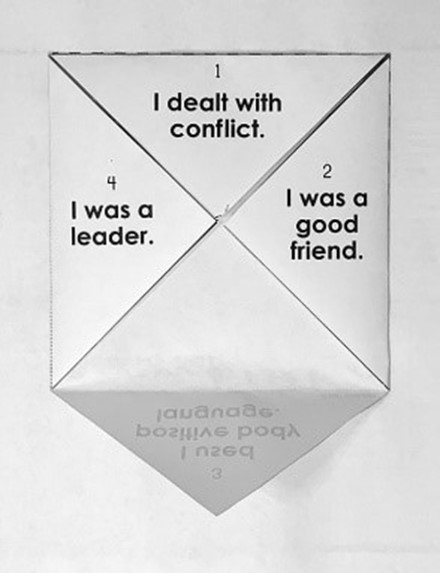
- Cut along the outside solid black lines of the square Relationships Foldable.
- Fold along the four dotted lines in the middle of the Foldable. Always fold so the dots are visible along the fold line. Students might help each other fold. Folding will form a square with four triangular-tabs.
- Glue the back of the Envelope Foldable onto the large gray square in the student book. Glue so that the #1 tab is at the top.
- Students write or draw examples of their When Moments under the tabs.
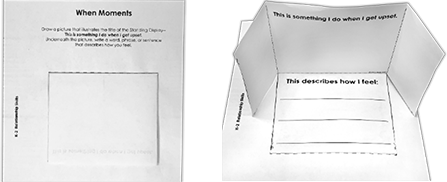
- Cut along the solid black lines of the large Standing Display Foldable.
- Fold along the three dotted lines of the Foldable. Always fold so the dots are visible along the fold line. For this Foldable, fold each fold again in the opposite direction. This allows the folded tabs to move forward and backward. Students might help each other fold and refold.
- Have students draw a scene for a conflict or disagreement. It could be something they experienced themselves or something that happened to someone else.
- Then have them write or draw ways they can stay calm when they feel upset. Remind them that calming strategies help clear their mind so they can handle difficult situations like conflicts and disagreements.
- When students are finished drawing and writing on the display, fold in the side tabs and fold the whole display flat into a rectangle. Glue the back of the display rectangle (where students wrote) onto the large gray rectangle in the student book. Have students ask a friend or the teacher if they are folding and positioning it correctly BEFORE gluing.
NOTE: After it is glued into the student book, the display should fold in and fold flat so the book can be closed. When the book is open to this page, the display can be opened and folded into a standing diorama.
Go to other SEL competencies in this book (Primary - Grades 1–2):
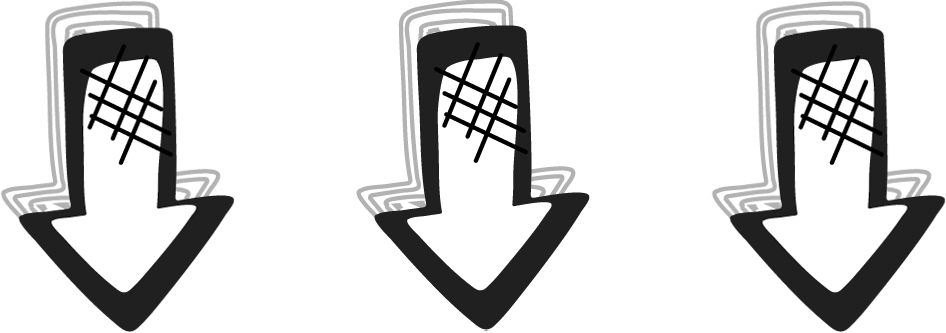
The teaching suggestions only work in accompaniment with the student portfolio, which has all the activity pages.
The teaching suggestions here are also available within a PDF of the entire teacher's manual.